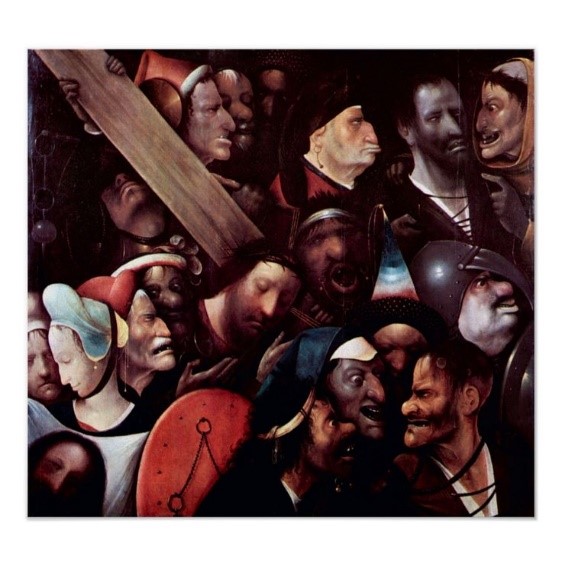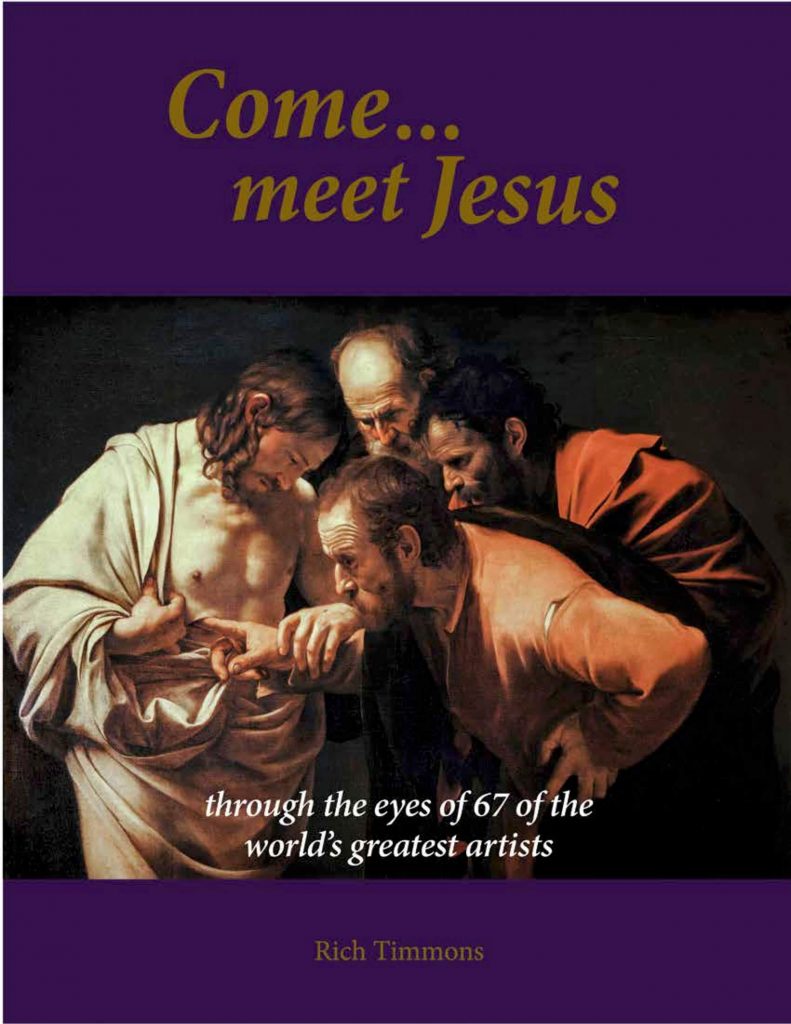When they had mocked him, they took the purple cloak off him, and put his own garments on him. They led him out to crucify him. They compelled one passing by, coming from the country, Simon of Cyrene, the father of Alexander and Rufus, to go with them that he might bear his cross. They brought him to the place called Golgotha, which is, being interpreted, “The place of a skull.” Mark 15:20-22
There is such a perfect balance of attraction and revulsion in this painting. As a work of art, it is beautiful because of the contrast of dark and light, rich reds and blues, and the rhythm and variety in the repetition of the faces and the movement in the groupings with faces looking in different directions, cut across by the striking diagonal of the cross. The forms are well-painted and modeled and feel three-dimensional. But it is undoubtedly a painting of the ugliness of humanity. The sorrowful Christ in the center of the composition is like an island swallowed up by the loud pressing of the evil crowd. Each face seems to represent a different type of inner ugliness – pride, a love of cruelty, foolishness and coarseness, mockery, sneakiness, and hardness of heart, illustrated by their specific exaggerated features and expressions.
Bosh (or perhaps a follower, attribution of this work is debated) is showing the inner hidden reality here, as he does so often in his work. It takes on a nightmarish, surreal quality. Some characters that are known are: the impenitent thief in the bottom right corner (snarling back at his mockers), the penitent thief in the top right corner (looking tortured by an aggressive monk), Simon of Cyrene looking upward and holding Christ’s cross in the shadows, and St Veronica, who according to legend (not scripture), wiped the face of Christ with her veil and his image was imprinted on it.
Bosh’s works are mysterious and have been interpreted differently at various points in history. Surrealism feels eerily modern but really stems from late medieval symbolic thinking of morality. His work is also a little dark and tortured, characteristic of Northern Renaissance, as opposed to Italian Renaissance.
This painting is a meditation on the ugliness of the human heart twisted and enslaved by sin, in contrast to the purity and meekness of the Savior who came to set them free. Imagine a pure and holy God loving these individuals who are so ugly that even as He hung on the cross Christ pleaded for their forgiveness! His beauty, glory, and love are so powerful that it overcomes our ugliness – His work on the cross separates us from the sin that makes us so ugly and sets us free.
Like, follow & share https://www.facebook.com/comemeetjesus.art
Shop coffee table books here


